Meadow voles are small rodents that can quickly wreak havoc on your lawn and garden.
For the past 15+ years, our team at Smith’s Pest Management has helped San Francisco Bay Area homeowners get rid of voles.
In this blog, we share our top vole control tips so you can reclaim your property.
Key Takeaways
- To get rid of voles, remove vegetation and shelter, protect young trees with trunk wraps, use pre-made repellents, place lethal traps, or use poison bait.
- Voles are attracted to yards that offer them ample food and shelter; removing these elements is a great way to eliminate them.
- If your DIY vole removal methods fail or you want more assistance, contact a professional like Smith’s Pest Management.
What are Voles?
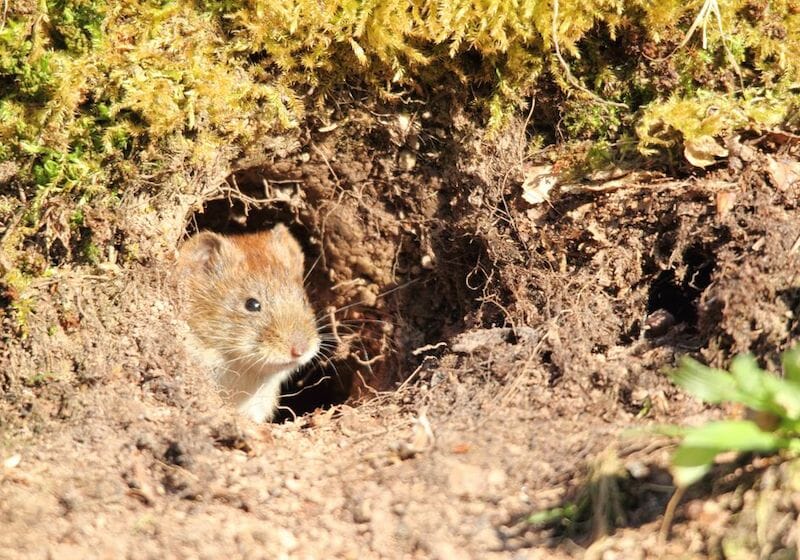
Meadow voles (scientific name Microtus pennsylvanicus) are sometimes called meadow mice.
They’re some of the most prolific and numerous mammals in North America, and also some of the hardest outdoor pests to get rid of.
Voracious eaters, they destroy even large trees and shrubs in just days.
They also reproduce rapidly – every 45 days, a single female could give birth to ten or more young.
Like mice, voles are small creatures – with chunky bodies about 7” long. They have short tails and small, furred ears. They tend to be brown, with dark gray bellies and brown feet.
They can be easily distinguished from moles, which are much larger and have clawed front feet, and shrews, which are smaller and more slender.
“Voles also feed on the bark of trees, so any trees planted can be killed by a two-inch-long field mouse over time. We see it all the time.” – Zachary Smith, owner of Smith’s Pest Management.
What Attracts Voles to Your Yard?
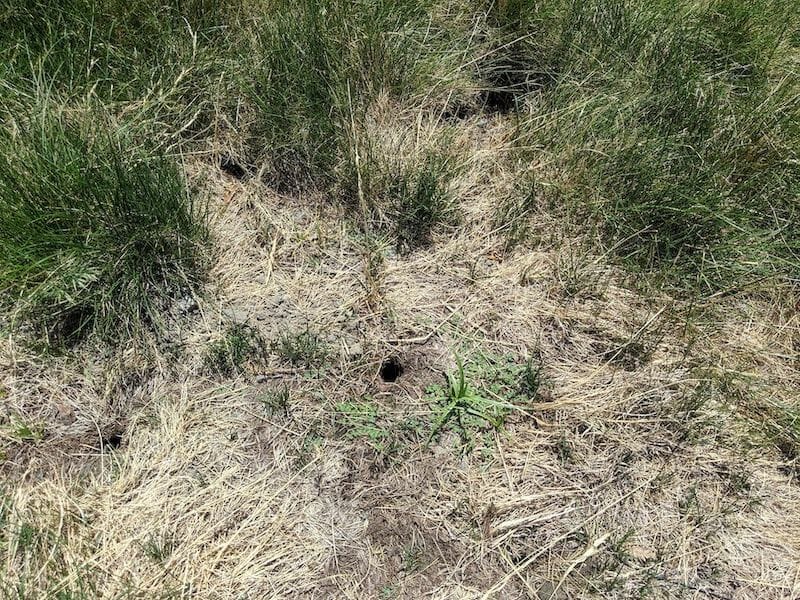
1. Food sources
Voles are primarily herbivores (although they occasionally consume invertebrates).
They feed on various plant species, including grasses and seeds. They’re also surprisingly voracious eaters for their size, consuming bark and shrubs and even killing whole trees.
Because of this, voles are likely to infest outdoor spaces that feature landscaping or gardens with appealing vegetation. Voles also love to eat weeds like clover and chickweed, which may grow in untended areas of large lots.
2. Moisture
Voles need adequate moisture to survive, so they infest outdoor areas with ponds, streams, and other wet spaces. If you have a garden with moist soil or sources of standing water, your space will be especially attractive to voles.
3. Shelter
Since voles are small prey animals, they need to seek shelter to stay safe from predators.
They’re also grassland animals, though, so they’ll thrive with even a small amount of grass cover. Gardens with thick vegetation or hiding places like piles of wood and debris are the perfect places for voles to take cover.
Voles also use layers of landscaping mulch to hide from predators and search for food and shelter.
Safety Considerations
To ensure responsible DIY vole control, follow these critical safety steps:
- Store baits out of reach. If you’re using poison baits, keep them in a locked cabinet where kids, pets, and non-target species cannot reach them. Make sure all baits and pesticides are clearly marked.
- Place all baits in tamper-proof bait stations. NEVER broadcast spread baits in your lawn, garden, or other unprotected areas.
- Read the labels on all pesticides, rodenticides, and other toxic products. Follow all label directions carefully during application.
- Wear PPE. Wear protective clothing like goggles, gloves, and long pants whenever you plan to handle baits or dispose of dead voles after trapping.
How to Get Rid of Voles
You’ve worked hard to create a beautiful outdoor space, and now you want to protect it.
Follow these tips to enjoy a healthy, vole-free yard.
With Humane Methods
1. Remove vegetation and shelter
Voles don’t like to feed out in the open. They prefer to hide in thatch and brushy, low-growth.
As such, one of the easiest ways to control their numbers is through habitat modification.
Remove dense ground cover, keep the lawn mowed, keep mulch light around trees and shrubs, and keep up on snow removal.
Remove wood piles and other debris to limit vole hiding places, trim all landscaping bushes from the ground up, and remove bird feeders from your outdoor space.
Rake up the dead grass voles left behind and reseed the affected area to cover vole trails and restore your lawn.
2. Protect young trees
Voles love to gnaw on the trunks of young trees.
To discourage this behavior and remove a favorite food source, wrap the lower trunk of young trees with a guard, like a wire mesh or plastic tubing.
For best results, tree guards should be tall enough to reach above the snow line in the winter (if you live in an area that receives snow), and the base should be buried in the soil. Additionally, the guard should be loose enough that it doesn’t restrict the tree’s growth.
If you need help with this, reach out to your local arborist.
3. Contact a professional pest management company
If you want a fast, comprehensive vole removal service, the best option is to hire a professional team.
Smith’s Pest Management offers eco-conscious meadow vole control services in the San Francisco Bay Area that will end the infestation and help you reclaim your lawn.
With Conventional Methods
4. Pre-made Repellents
Pre-made, commercial vole repellents that contain ingredients like castor oil, rosemary oil, or peppermint oil can be effective products to push voles out of their burrows and encourage them to leave your property.
5. Kill-traps
Vole traps kill voles instantly and can effectively eliminate large vole populations in your yard.
In small lawns and gardens, ongoing trapping is an effective way to monitor and control vole populations and prevent re-infestation.
Here’s how to trap voles:
- For best results, use wooden snap mouse traps set at 10-foot intervals along plant rows. A dozen or so snap traps should be efficient for smaller vole populations.
- You don’t need to bait vole traps – the critters will just step right on them. If you want to add some bait, though, a pinch of oatmeal on the trigger of the trap will do just fine. To prevent the traps from catching small birds, cover it with a bit of downspout material or some cardboard.
- To secure the trap to the runway, drive a 6” nail through the trap and down into the soil, which will keep the trap secure as the voles run into it.
- Place traps directly in established vole runways for best results, with the trap trigger extending into the runway.
- Reset and re-bait the traps daily until they stop catching voles.
When the traps are active, keep grassy and weedy areas surrounding the traps well-mowed, which reduces shelter for voles.
6. Bait
Poison baits, like Rozol or Kaput Mouse blocks, are substances designed to kill voles upon ingestion.
Make sure to add these to bait stations – you never want to place loose bait where other animals can reach it.
The poisons may mimic the smell or appearance of popular vole food sources and generally kill the animals within 12-24 hours of consumption.
Most states make anticoagulant and zinc phosphide baits available for pest management professionals and consumers.
These baits are most effective when placed in bait stations that keep them secure, dry, and protected from kids, pets, and non-target species.
Whatever You Do, Avoid these Methods
Don’t waste your time or resources on these unproven vole control tactics:
1. Repellent plants
Some sources tell you to leverage so-called vole-repellent plant varieties, like garlic, spearmint, thyme, and onion.
Unfortunately, these plants won’t keep voles away, no matter how many of them you put in the ground.
2. Burrow fumigants
Fumigants may seem like a smart way to control vole populations. Unfortunately, they’re not that effective for controlling the rodents.
The reason is simple: vole burrows are shallow, with numerous open holes.
This makes it difficult for gas to permeate the burrows and stay in the ground long enough to kill voles.
3. Electromagnetic and ultrasonic devices
Electromagnetic and ultrasonic devices supposedly work by creating an unpleasant atmosphere for voles to inhabit.
Unfortunately, there’s no evidence to prove that they work. Instead, voles just get used to the presence of these devices and learn to burrow and feed around them.
4. Flooding
Flooding is also not an effective way to get rid of voles.
Because vole burrows are so shallow and close to the surface, it’s easy for the rodents to escape flooding efforts or re-construct their burrows somewhere else.
Important Laws and Regulations
Today, California and many other states classify voles as non-game animals. This means if voles are damaging crops or property, the owner or tenant can legally control them at any time and in any legal manner, including with traps, poison baits, and rodenticides.
Vole control efforts are governed on the Federal level by the Federal Insecticide, Rodenticide, and Fungicide Act of 1996. This act states that all pesticides used must be registered and approved by the Environmental Protection Agency (EPA) to ensure they do not pose unreasonable risks to human health or the environment.
It’s important to remember that vole control laws can vary by location. Therefore, it’s essential to thoroughly research the rules and regulations in your area before starting any DIY vole control. Failure to do so could result in legal consequences.
In California, there is a rare desert subspecies of the California vole, the Amargosa vole, which is endangered and highly protected by Federal law. This vole species only lives in the extreme southeastern reaches of Inyo County, though, so it’s unlikely you’ll ever encounter these tiny, white-bearded critters.
How Exterminators Deal with Voles
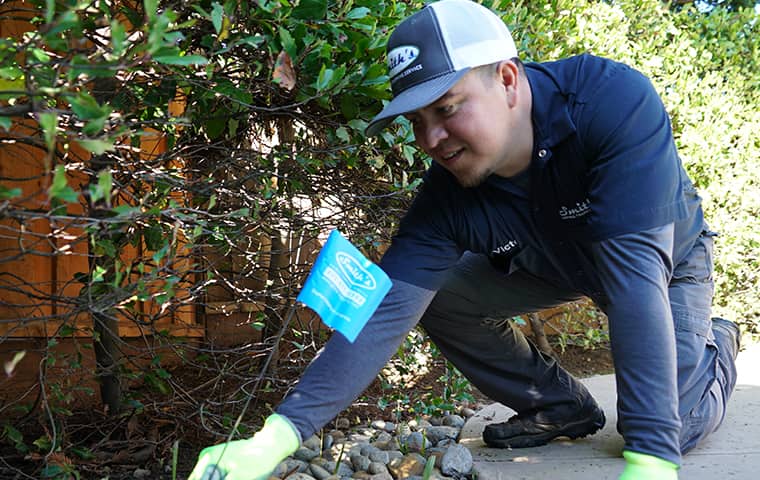
What can you expect when you hire a rodent control team like Smith’s to get rid of voles?
Here’s the process our team follows:
1. Inspection
Before we can eliminate voles from your property, we need to know where they live.
During our preliminary inspection, we’ll identify vole paths and burrows and note any vole-damaged areas of your lawn.
We’ll also check for signs of other pest infestations that could worsen your vole problem.
2. Development of a Management Plan
Based on the results of our initial inspection, our team will develop a management plan to resolve your vole problem.
Smith’s uses Integrated Pest Management (IPM) techniques that involve a combination of trapping and habitat modification.
We’ll recommend the right treatment options based on the severity of your vole infestation and the characteristics of your property.
3. Vole Control
Next, we’ll deploy our vole control measures.
Our vole control techniques include ground-tamper-resistant no-kill traps, bait holes and bait stations, and carbon monoxide injection methods, all of which are effective, quick ways to get rid of voles.
4. Follow-up Treatments
Once we’ve completed your initial vole control treatment, we’ll provide recommendations for follow-up treatments, as needed.
Our ongoing control methods include both baiting and trapping, which will keep your property vole-free for years to come.
Turn to Smith’s for Expert Vole Control Services
Don’t live with voles and the damage they do to your outdoor spaces. Hire a professional pest management company to help.
Here at Smith’s Pest Management, we specialize in solutions-based, comprehensive vole control services for homeowners in and around the San Francisco Bay Area as well as the Santa Cruz and Monterey areas.
Whether you’re trying to protect your garden or want to keep your beautiful yard vole-free all winter long, our team can help.
Contact us today to learn more about our professional services or to request an appointment: (408) 871-6988
FAQ
What kind of damage do voles cause?
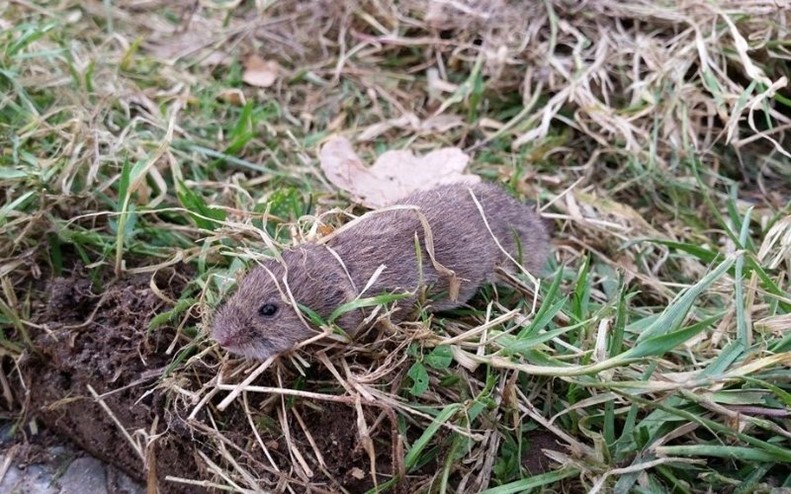
Voles can be very damaging to lawns, yards, and gardens. According to our founder, Zachary Smith, a licensed pest control professional, “Voles eat meadow grass voraciously and will create Swiss-cheese-like damage in your lawn and garden. If you don’t get rid of voles, they will destroy your landscaping.”
Here are a few ways they can destroy your outdoor space.
- Damage to gardens and landscaping. They love to chew the vulnerable stems of young trees and woody ornamental plants, causing severe damage and dieback.
- Damage to the turf. Voles also cause considerable turf damage, which most homeowners discover in the spring.
- Runways in the lawn. All winter, snow cover protects voles from predators and provides shelter for feeding. When the snow melts in the spring, homeowners often find the “runways” that indicate a vole infestation. These runways are about the width of a golf ball and look like grooves in the grass surface. Often, they have small holes all along the pathway. They form when voles feed on the turf canopy. They also leave layers of excrement along the runways and wear down the grass surface with their foot traffic.
- Damage to growing plants. As voles feed in these “runways,” they chew plants down to the growing point at ground level, impeding later plant growth.
What are the signs of voles in your yard?
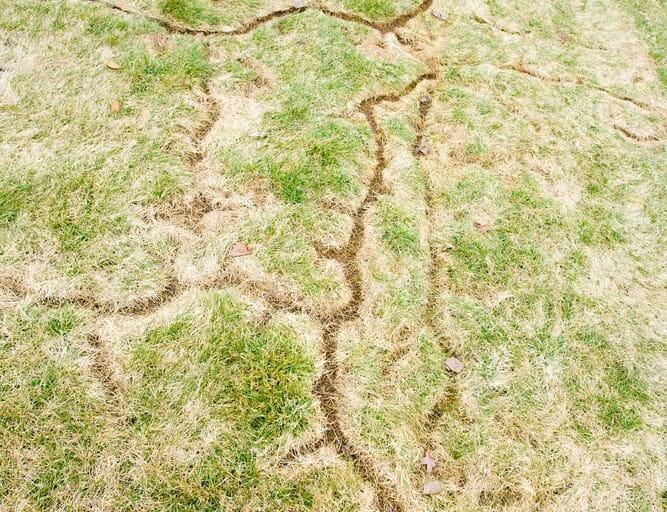
Here are a few sure-fire signs of voles in your yard:
- Paths 1”-2” wide and about 1” deep in the turf surface.
- Vole burrows look like holes in the lawn or around the bases of trees. Unlike molehills, these dens do not feature soil mounding.
- Spaces where the grass of the lawn is suddenly very short.
- Noticeable gnaw marks on the stems of woody plants and young trees.
- Exposed stems that have been gnawed to a pointed tip.
- Dead plants that, when lifted, have no root structure remaining.
Since voles multiply rapidly, producing 5-10 litters each year with an average of five young per litter, vole populations can quickly spiral out of control.
With this in mind, it’s important to act quickly to control voles.
We recommend contacting a professional pest management company like Smith’s at the first sign of a vole infestation in your yard.
How long does it take to get rid of voles?
The answer to this question depends on which method you use. For example, if you’ve chosen to set live traps, you can expect to spend about 3-4 weeks reducing your vole population.
If you prefer to hire a professional pest control service for vole control, you’ll see much faster results.
Companies like Smith’s Pest Management provide prompt removal services to help you quickly reclaim your property.
Are voles dangerous?
Voles are not a physical threat to people, but they can spread disease.
When voles urinate or defecate on your property, they can introduce parasites and diseases like salmonellosis, leptospirosis, and Machupo virus.
Many of these conditions are transmissible to people and domestic pets.
What are the differences between moles, voles, and gophers?
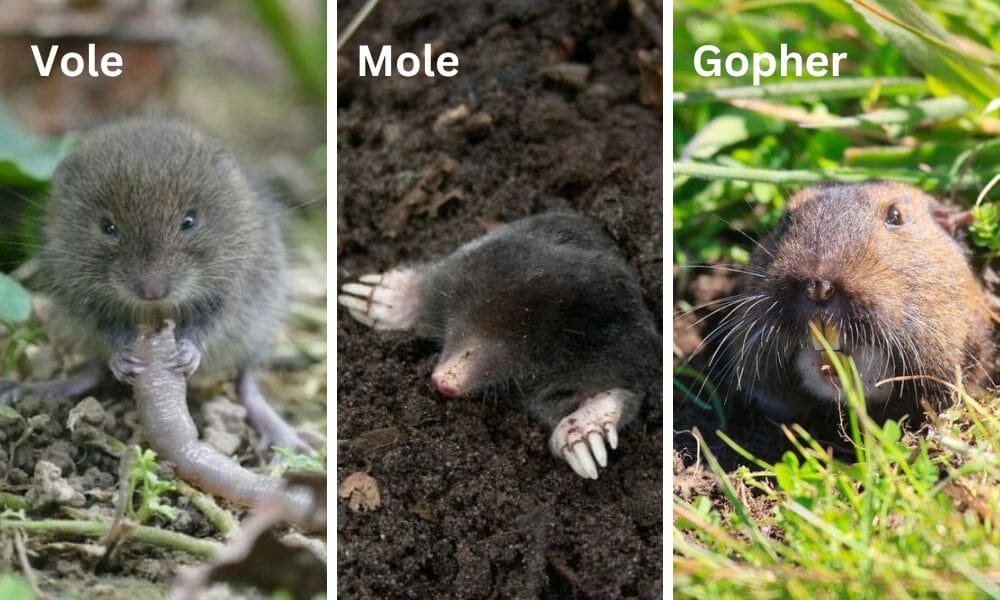
While the names sound similar, voles and moles are not the same animals, and there are some significant differences between voles and gophers. Although all of these animals make tunnels in your yard, they have different traits. Here’s a breakdown:
Voles
Voles look like field mice. They are small rodents with round, compact bodies, short tails, ears that lie close to their bodies, and small eyes. They’re typically about 5-8 inches long and have large teeth to gnaw plant stems and roots.
Voles are known for their tendency to dig. They make tunnels in the soil and create golf ball-sized exit holes in existing mole tunnels. Voles eat plants.
Like many other rodents, they enjoy a vegetarian diet, gnawing away at the stems of plants and grass blades. Their tunnels tend to be near the surface of a garden or yard because of their preferred food sources.
When voles are on your property, you may notice previously healthy plants keeled over with their roots chewed off. Once voles establish a colony, they breed quickly, so controlling the spread is essential.
Moles
Unlike voles, moles are not rodents. Instead, they’re small mammals that spend much of their lives underground, digging tunnels.
They’re 4-7 inches long with large, paddle-shaped feet and prominent claws that help them move soil.
Their distinctly-shaped heads and snouts are elongated, with small eyes and no external ears.
Their bodies are covered in dense, brown-gray fur that has no grain. This allows the mole to move quickly in all directions underground.
Moles are prolific diggers. They’re known for creating volcano-shaped hills in lawns and garden soil. According to the Home & Garden Information Center at Clemson University’s Cooperative Extension:
[Mole] tunnels are dug at a rate of 18 feet per hour. Moles can add 150 feet of new tunnels in the lawn each day. Moles are expert diggers that will consume up to 60 to 100% of their body weight in insects, grubs, and earthworms each day. This equates to a 5-ounce mole eating 50 pounds of its prey in a year.
While moles, like voles, tunnel in gardens, it’s a misconception that they do so to eat the roots of plants. Instead, they target earthworms that live in the garden soil.
If moles are damaging your garden, hire professional mole control services to stop the cycle, or read about how to get rid of them here.
Gophers
Gophers are burrowing rodents with medium-sized bodies that range from 5-14” long, which makes them larger than either voles or moles. Built for an underground life, gophers spend most of their time digging burrows in gardens and lawns and pushing the dirt they excavate up to the surface. While moles make volcano-shaped mounds, the mounds gophers create are characteristically horseshoe-shaped.
Gophers eat roots, plants, and tubers and are known to pull complete vegetation into their burrows from below, quickly destroying gardens and ornamental landscaping.
How do you fix a vole-damaged lawn?
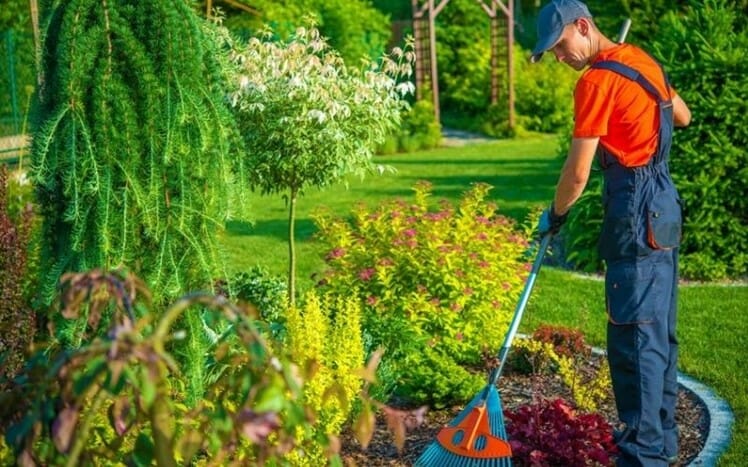
If voles have damaged your lawn, you want to restore it quickly.
Here are a few quick tips:
- Start by identifying the extent of the vole damage – inspect your entire lawn for signs of vole activity, such as tunnels, burrow holes, and damaged or destroyed plants.
- Remove debris and attractants that may be keeping voles around. This includes dead plant material, wood piles, and damaged plants.
- If voles have damaged the plants in your yard, focus on treating them to encourage new growth. This may mean trimming or pruning the plants or treating them with a fungicide or insecticide to prevent future vole damage.
- Give the entire lawn surface a gentle rake to break up debris and excrement in vole runways and promote lawn growth.
- Fill in vole tunnels, burrow holes, and pathways with topsoil. Tamp the soil down firmly to prevent voles from returning to these holes.
- Fertilize and overseed any areas of thin or chewed-down grass.
- Prune and fertilize trees or shrubs that voles have gnawed on.
- Assess the entire lawn and modify the vole habitat wherever possible. This means reducing available cover and food sources in the area and making the space less attractive to voles and other pests.
If you have severe vole damage in your lawn, hire a professional company that offers turf and ornamental treatments.


